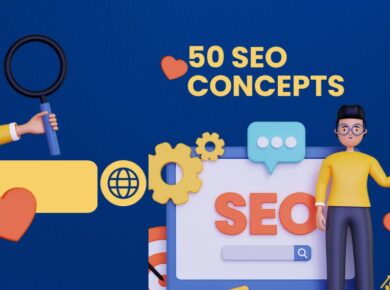When it comes to digital advertising, there are a plethora of options available. Local Service Ads (LSAs) and Google Ads are two popular choices on the Google platform. If you’re a local service provider, you may be wondering which advertising method is better suited to your needs. In this article, I will compare Local Service Ads and Google Ads to help you decide which one is the right choice for your business.
LSAs are specifically designed to target local service providers looking to connect with potential customers in their geographic area. These ads use geo-targeting to match service providers with customers who are physically close to the business. As a result, LSAs offer a higher level of precision in reaching your target audience in your local area.
On the other hand, Google Ads offer a wide range of ad types and are designed to reach global audiences. With Google Ads, you have the flexibility to choose diverse ad placements across the search results page, display network, and even YouTube. This opens up a world of possibilities for expanding your reach beyond your local area.
LSAs have a prominent placement at the top of Google’s search results, making them highly visible to potential customers actively searching for services. This top-of-page placement gives LSAs a distinct advantage in attracting immediate attention and generating leads.
Google Ads, on the other hand, provide more control over your ad customization. With a wide range of keyword possibilities and a variety of ad types to choose from, you can tailor your ads to target specific audiences and achieve your desired marketing objectives.
When it comes to payment models, LSAs operate on a pay-per-lead (PPL) basis, meaning you only pay when a potential customer contacts you through the ad. On the other hand, Google Ads follow a pay-per-click (PPC) model, where you pay for each click on your ad, regardless of whether it leads to a conversion.
In terms of cost, the average cost per click in Google Ads is between $1 and $4. On the other hand, the average cost per lead in LSAs is around $23. While LSAs may be more expensive, they generally generate high-quality leads, which can translate into a higher return on investment.
In conclusion, the choice between Local Service Ads and Google Ads ultimately depends on your business goals and target audience. If you’re a local service provider looking to reach potential customers in your immediate area and generate high-quality leads, LSAs may be the better option for you. However, if you’re looking to expand your reach beyond your local area and have more control over your ad customization, Google Ads may be a more suitable choice.
Target Audience and Ad Placements
When it comes to targeting the right audience, Local Service Ads (LSAs) and Google Ads offer different approaches. LSAs are specifically designed for local service providers and individuals actively searching for services in their area. These ads are strategically shown to users in proximity to the business location, ensuring they reach potential customers who have immediate service needs or are ready to make a decision.
LSAs have a prime placement at the top of search results, making them highly preferred by local service providers who want maximum visibility for their offerings. This prominent placement allows LSAs to capture the attention of users seeking local services, increasing the chances of engagement and conversion.
On the other hand, Google Ads offer diverse ad placements depending on the type of campaign and advertising objectives. With Google Ads, businesses have the flexibility to reach a wider audience and tailor their ads to specific geographic locations, global markets, or users with particular interests and behaviors.
Ad placements for Google Ads include:
- Search Results: Google Ads can appear within the search results page when users search for relevant keywords.
- Display Network Websites: These ads can be displayed on a network of websites that are part of the Google Display Network. This allows businesses to reach users while they browse content related to their products or services.
- YouTube: Google Ads can also be showcased on YouTube, allowing businesses to engage with users through video advertisements.
With such diverse ad placements, Google Ads provide businesses with the opportunity to reach a wider range of consumers and explore different advertising channels to optimize their reach and impact.
Payment Models and Cost
When it comes to payment models, Local Service Ads (LSAs) and Google Ads follow different approaches. LSAs operate on a pay-per-lead (PPL) model, which means advertisers only pay when a potential customer contacts them through the ad. On the other hand, Google Ads use a pay-per-click (PPC) model, where advertisers are charged for each click on their ads, regardless of whether it leads to a conversion.
Let’s take a closer look at the costs involved. In Google Ads, the average cost per click ranges from $1 to $4 on the search network. However, this cost can be higher for competitive keywords. On the flip side, LSAs have an average cost per lead of around $23. It’s essential to note that the specific cost per lead can vary depending on the service category. For instance, locksmiths tend to have a lower cost per lead compared to dentists or carpenters.
Comparison of Payment Models and Costs
| Payment Model | Platform | Average Cost per Click/Lead |
|---|---|---|
| Pay-per-lead (PPL) | Local Service Ads (LSAs) | $23 (varies by service category) |
| Pay-per-click (PPC) | Google Ads | $1 to $4 (search network) |
As you can see from the table above, LSAs generally have a higher cost per lead compared to Google Ads’ cost per click. However, LSAs can often generate high-quality leads due to their specific targeting and prominent placement at the top of Google’s search results.

Ad Customization and Badges
When it comes to ad customization, Local Service Ads (LSAs) and Google Ads offer different levels of control. In LSAs, advertisers provide information about their business, and Google determines which keywords will help people find them. This limited customization may be a drawback for those looking for specific targeting options. In contrast, Google Ads provide a wider range of keyword possibilities and allow for more customized ad copy. This flexibility enables advertisers to tailor their message to their target audience and achieve better results.
One unique feature of LSAs is the option to display badges that can enhance a business’s credibility and trust. LSAs offer two badges, namely the “Google Screened” and “Google Guaranteed” badges. The Google Guarantee badge indicates that a business has undergone background checks and meets certain quality standards set by Google. This badge helps potential customers feel confident in choosing a service provider. The Google Screened badge, on the other hand, indicates that a professional service company has successfully gained licensing verifications. This badge assures customers of the company’s expertise and professionalism.
These badges can play a crucial role in attracting more local clients as they increase credibility and trust. By highlighting a business’s reliability and expertise, these badges make it stand out in search results and differentiate it from competitors. As a result, businesses with these badges have a higher chance of capturing the attention and trust of potential customers.
While Google Ads do not feature these badges as they do not require businesses to be verified by Google, they offer other customization options that allow advertisers to create compelling and personalized ads tailored to their target audience.

Comparison of Ad Customization and Badges: LSAs vs. Google Ads
| Features | LSAs | Google Ads |
|---|---|---|
| Ad Customization | Limited control | Wider range of keyword possibilities and more customization options |
| Badges | “Google Screened” and “Google Guaranteed” badges | No badges |
| Benefits | Increased credibility and trust, attracting more local clients | Opportunity for customized ads and reaching a wider audience |
Conclusion
In conclusion, both Local Service Ads and Google Ads offer unique advantages depending on your business goals and target audience. Local Service Ads (LSAs) are an ideal choice for local service providers who want to connect with customers in their area and generate high-quality leads. LSAs have a prominent placement at the top of search results, providing maximum visibility. They operate on a pay-per-lead model, ensuring that businesses only pay when they receive relevant leads.
On the other hand, Google Ads provide more customization options and diverse ad placements, making them suitable for businesses looking to reach global audiences and target specific keywords. With Google Ads, advertisers have greater control over their ad copy and can choose from a wide range of ad formats, including search network ads, display network ads, and YouTube ads. This flexibility allows businesses to tailor their ads to their unique marketing objectives.
For local service businesses, it is recommended to start with LSAs and gradually expand to Google Ads as needed. By utilizing LSAs, businesses can take advantage of their prominent placement and generate high-quality local leads. At the same time, incorporating Google Ads into the marketing strategy can help reach a broader audience and expand the online presence. A combination of both platforms can yield even better results, allowing businesses to target local customers with LSAs and implement broader online marketing campaigns with Google Ads.
Ultimately, the best strategy for advertising on Google may involve a combination of Local Service Ads and Google Ads. These platforms offer complementary strengths and can be used in synergy to maximize reach, generate leads, and increase conversion rates. By assessing the specific needs and goals of your business, you can determine the optimal mix of LSAs and Google Ads to create a comprehensive and effective online advertising strategy that drives success.
FAQ
What is the difference between Local Service Ads and Google Ads?
Local Service Ads (LSAs) are designed to target a specific audience of local service providers, while Google Ads offer a wider variety of ad types and aim to reach global audiences.
Who is the target audience for LSAs and Google Ads?
LSAs target local service providers and individuals actively searching for services in their area, while Google Ads cater to a wider audience with options to reach local customers, target global markets, or engage users with specific interests and behaviors.
Where are LSAs and Google Ads displayed?
LSAs have a prominent placement at the top of Google’s search results, while Google Ads have diverse placements across the search results page, display network, and YouTube.
How do the payment models and cost differ between LSAs and Google Ads?
LSAs operate on a pay-per-lead (PPL) model, where advertisers pay when a potential customer contacts them through the ad. Google Ads follow a pay-per-click (PPC) model, where advertisers are charged for each click on their ads. The average cost per click in Google Ads ranges from
FAQ
What is the difference between Local Service Ads and Google Ads?
Local Service Ads (LSAs) are designed to target a specific audience of local service providers, while Google Ads offer a wider variety of ad types and aim to reach global audiences.
Who is the target audience for LSAs and Google Ads?
LSAs target local service providers and individuals actively searching for services in their area, while Google Ads cater to a wider audience with options to reach local customers, target global markets, or engage users with specific interests and behaviors.
Where are LSAs and Google Ads displayed?
LSAs have a prominent placement at the top of Google’s search results, while Google Ads have diverse placements across the search results page, display network, and YouTube.
How do the payment models and cost differ between LSAs and Google Ads?
LSAs operate on a pay-per-lead (PPL) model, where advertisers pay when a potential customer contacts them through the ad. Google Ads follow a pay-per-click (PPC) model, where advertisers are charged for each click on their ads. The average cost per click in Google Ads ranges from $1 to $4, while the average cost per lead in LSAs is around $23.
Can I customize my ads in LSAs and Google Ads?
LSAs offer less control over ad customization compared to Google Ads, which offer a wider range of keyword possibilities and allow for more customized ad copy.
Do LSAs and Google Ads feature any verification badges?
LSAs provide the opportunity to display the “Google Screened” and “Google Guaranteed” badges, which indicate that a business has undergone background checks and meets certain quality standards set by Google. Google Ads, however, do not feature these badges as they do not require businesses to be verified by Google.
to , while the average cost per lead in LSAs is around .
Can I customize my ads in LSAs and Google Ads?
LSAs offer less control over ad customization compared to Google Ads, which offer a wider range of keyword possibilities and allow for more customized ad copy.
Do LSAs and Google Ads feature any verification badges?
LSAs provide the opportunity to display the “Google Screened” and “Google Guaranteed” badges, which indicate that a business has undergone background checks and meets certain quality standards set by Google. Google Ads, however, do not feature these badges as they do not require businesses to be verified by Google.







